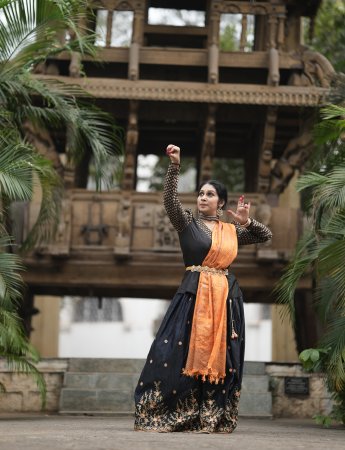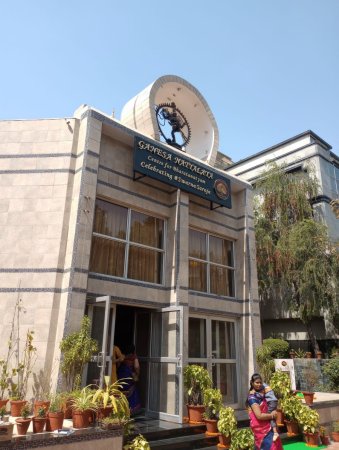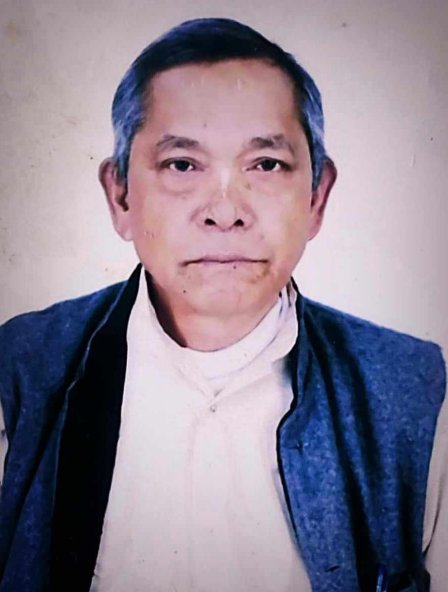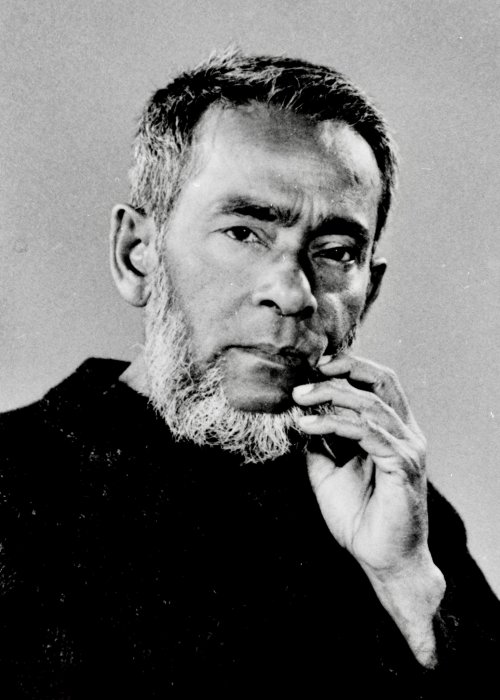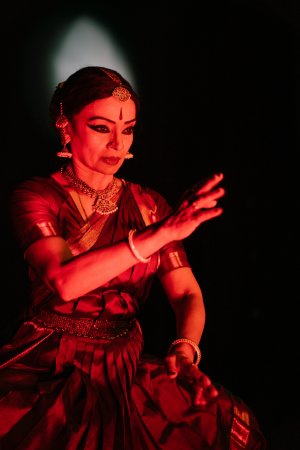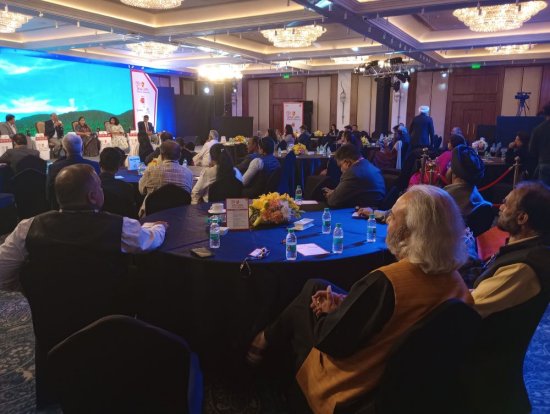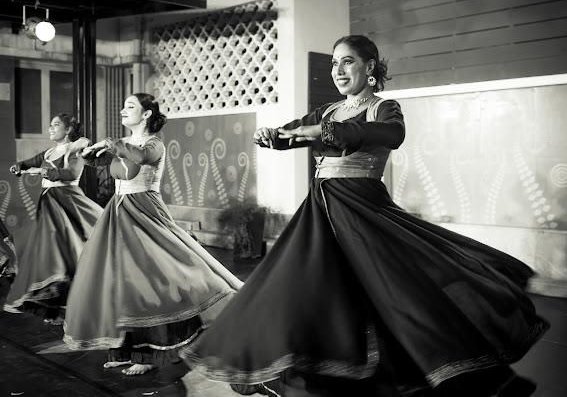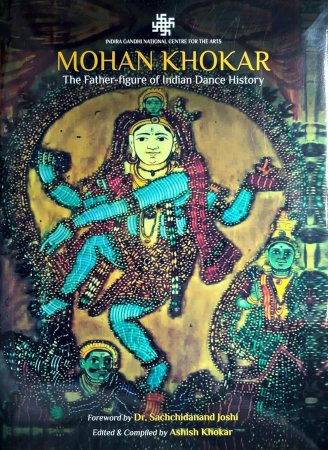Please provide your name / email id along with your comment. Anonymous and derogatory comments will be removed.
Please provide your name / email id along with your comment. Anonymous and derogatory comments will be removed.
Friday 29 March 2024
Article - On Mohiniyattam's ascent - Mythili Maratt Anoop
Wednesday 27 March 2024
Article - Technology takes over techniques of naatya - VP Dhananjayan
It is heartening to see a surfeit of professional productions in the Naatya arena attracting a huge mixed audience being entertained with a fairly good standard of dancing. Over the years some of the Bharatanaatyam schools have been competing with each other excelling in their presentation quality using technological developments both in stagecraft and audio support. The senior and junior naatya acharyas and self-styled choreographers strive hard to train their students to maintain a good dancing technique with precision, synchronisation in group dancing, uniformity in costuming though some lack aesthetic colours and design. Some of the out of box thematic solo and group presentations are testimonies for the present intelligent generation's creative thinking abilities surpassing their immediate and previous generation who had limited technological knowledge and exposure to internet, YouTube, online expertise etc. The group choreography employed in the film industry by dance masters goes beyond our imaginations creating fantasies of group formations which in turn influence the new generation of classical dancers, be it Bharatanaatyam or any other Bharateeya naatyam.
Please provide your name / email id along with your comment. Anonymous and derogatory comments will be removed.
Sunday 24 March 2024
Article - Entrepreneurship in performing arts - Aparna Vasudevan
Performing arts entrepreneurship is not a new invention. It can reasonably be presumed that performing artists have always been entrepreneurial. It is indubitably admirable that art thinkers and educators have started to ponder this subject seriously for years. Nevertheless, it was only a few years ago that the subject was made as Master's program at university level around the globe. It is essentially focusing on cultural and performing art entrepreneurship today. Different modern art incubators and performing art institutions can play a key role in fostering this entire idea.
Please provide your name / email id along with your comment. Anonymous and derogatory comments will be removed.
Men to the fore! - Dance Matters: Column by Ashish Mohan Khokar
So, when in the Swarna Saroja year - marked to peg 50 years is her saas-guru creation the Ganesa Natyalaya - she platformed 25 male dancers in one day, she created a new record in excellence, entertainment and engagement with art.
Male dancers have had an unusual history. Most first generation gurus, nattuvanars or gharana dancers were men. Even forms like Kuchipudi, Yakshagana, Sattriya and of course Kathakali had only male dancers. Then slowly the city-smart and college educated girls of Mumbai, Chennai, Kolkata started taking to these and other classical forms. A trend started that slowly brought prakritis to the forefront and purush started getting relegated to the background. There were of course the couple dancers like Uday Shankar - Amala, US Krishna Rao - Chandrabagha Devi, Gopinath - Thankamani and Nataraj - Shakuntala. Next generation copied that idea of couple dancing or were inspired by above names and so we had the Dhananjayans, the Reddys, Singhajit Singh - Charu Sija Mathur, Thankamani - Govindan Kutty, Jayarama Rao -Vanashree Rao and more in many forms.
Please provide your name / email id along with your comment. Anonymous and derogatory comments will be removed.
Tuesday 19 March 2024
Profile - Guru Sagolshem Kirti Singh (1956-2024) - Sinam Basu Singh
Traditional Manipuri dance Guru Sagolshem Kirti Singh expired on 6th March 2024 at his residence.
Guru Sagolshem Kirti Singh, son of S. Kesho Singh, resident of Uripok Takhellambam Leikai, Imphal West, Manipur, was born on 1st March 1956. He received training in Manipuri dance from local gurus from early stage of life and formal training in three year certificate course JNMDA - 1970 and completed Diploma in Manipuri dance JNMDA-1973.
Please provide your name / email id along with your comment. Anonymous and derogatory comments will be removed.
Thursday 14 March 2024
Profile - On the 17th Death Anniversary of Sushil Dasgupta (1923-2008) - Bharat Sharma
From time immemorial, Music and Dance have an intimate relationship - one lives on the other in performing arts. In the 20th century, composers and choreographers shared a tenuous relationship in stimulating fresh trends in dance-making - both in the East and the West.
This post looks into a particular thread of music-making which evolved on Indian sub-continent, within the expansive 'nationalist/post-colonial' discourse, based on Indian instruments, voice culture, 'swara' of 'raga', intricate 'tala' system, and deeply embedded within the ethos of indigenous melodies and orchestration. A kind of 'new tradition' came into being, emanating from the ingenuity of their creators. In particular I would like to project the work of Sushil Dasgupta - a music composer par excellence - who became the longest collaborator of choreographer Narendra Sharma, with beginnings that can be tracked back to 1946.
Please provide your name / email id along with your comment. Anonymous and derogatory comments will be removed.
Wednesday 13 March 2024
When the artiste and the art become one entity in dialogue - Taalam: column by Leela Venkataraman
Please provide your name / email id along with your comment. Anonymous and derogatory comments will be removed.
Sunday 10 March 2024
Article - Reappraising Bharatanatyam for physical, psychological and psychosocial benefits - Krithika V Balaji
This article reappraises Bharatanatyam from a therapeutic point of view, intending to explore the benefits it offers in physical, psychological and psycho-social realms to the practitioner. The aim is to derive useful insights on employing Bharatanatyam as a therapeutic dance form to aspirants seeking benefits in this regard. The insights can serve as a benchmark to trainers who seek to expand the scope of the dance form to a therapeutic plane. While mainstream research focuses on the aesthetic and artistic features of Bharatanatyam, often the therapeutic benefits offered by this dance form that is comparable to yoga and other forms of wellness therapies are overlooked and under-researched. This research is a narrative exploration of the therapeutic dimensions of Bharatanatyam.
Introduction
In India, the land renowned for culture and heritage, Bharatanatyam is considered as a representation of the ancient culture - connected with sculptures, music, poetry, scriptures, theatre and spirituality. Bharatanatyam is one of the oldest dance forms in India originating from the Southern part of the nation. This art form, as described in the Natya Shastra [1] (200 BCE), is an aesthetic and divine art which is revered for ages for its authenticity and spirituality. Bharatanatyam is a dance form which evolved from the Natya Veda [2] and has a spiritual dimension to it. The Natya Veda, as per the Hindu mythology, was imparted to the world by Lord Brahma [3] as a kreedaneeyatha [4] or a plaything that could entertain as well as impart the sense of values implying its spiritual nature in the Indian culture. Bharatanatyam is a celebration of the mind, body and spirit, similar to all the other Indian classical forms. Anyone can learn and perform this art devoid of religion, caste or creed. It is a Darshan - a philosophy on its own. It is always evolving and timeless. (Rele, K. 2018).
Please provide your name / email id along with your comment. Anonymous and derogatory comments will be removed.
Saturday 9 March 2024
Panchabhutam! - Dance Matters: Column by Ashish Mohan Khokar
JGPAC sounds most unlike a dance music place. But it is. A college of performing arts, no less. In Ahmedabad, near Navrangpura area, beyond Gujarat University campus. The college architecture is nothing unusual in the landscape of mushrooming businesses in this city, now resembling a mini Manhattan. I've been visiting Amdavad (as locals call it) for 40 plus years now. It started with Paldi circle for most and ended at Ellis Bridge. There was one hotel those days called Karnavati and one dance institution of national importance - Darpana, initiated by the most gracious lady in dance field I've met in my 60+ conscious years - Mrinalini Sarabhai. What an epitome of goodness, on stage and off stage. She was a close friend of our family. My mother's guru vidwan Muthukumaran Pillai was her guru too. In fact, he went and helped start the first Bharatanatyam classes in that city in 1950s when Darpana was set up. He stayed there 2 years to help Mrinalini Amma find her feet and returned only as food and dusty city of textiles made him sick. As it makes me! Every time I've been to that city, I've fallen ill. 9/10 times. Something's in the air. Last I was there, I caught Covid. Two years I kept safe in the South and even Delhi trips but Gujus are very democratic people who follow no rules. No one wore masks inflight too! One can see it in city traffic and people's way of life. Shouting, talking loudly, laughing, not taking anything seriously except their accounts, stocks and shares; they are the Punjabis of West India.
Please provide your name / email id along with your comment. Anonymous and derogatory comments will be removed.
Tuesday 5 March 2024
Kathak draped in a different sensibility - Taalam: column by Leela Venkataraman
Please provide your name / email id along with your comment. Anonymous and derogatory comments will be removed.
Sunday 3 March 2024
Book Review - Mohan Khokar - The Father figure of Indian Dance History - Dr. Uma Anantani
The tour itinerary in association with IGNCA of this extremely attractive compilation in 300 pages, this state-of-the-art volume began with its inaugural release on 30th December 2023 at Kalakshetra, Chennai, followed by release on 7th February, 11th February and 12th February 2024, at Mumbai, Vadodara and Ahmedabad respectively. At Mumbai, the release event was organised in association with Shri Shanmukhananda Fine Arts Sangeetha Sabha and Ministry of Culture, GoI; at Vadodara, it was in association with Anjali Memorial Committee and the Dance Department, Faculty of Performing Arts, MS University and at Ahmedabad with JG College of Performing Arts. For every release, the mesmerising feature was screening of a short film on Mohan Khokar and his works and interesting talks by practitioners and scholars on dance and dance history.
Please provide your name / email id along with your comment. Anonymous and derogatory comments will be removed.
Saturday 2 March 2024
Article - Response to T. M. Krishna's Opinion article - Jeetendra Hirschfeld
In his latest opinion piece (11 February 2024), singer T. M. Krishna again reminds us of the historical and ongoing injustices within Bharatanatyam art, focusing on its appropriation by the Brahmin community in the 20th century. In his article, T. M. Krishna adeptly blends academic discourse, employing terms like "rupture" and scholarly vocabulary ending in "-ness", with accessible English. Unlike many dance scholars who employ intricate terminology and convoluted sentence structures, the singer opts for clarity, potentially ensuring his message resonates with many. He also appears to acknowledge his caste privilege by using the inclusive "we" in his piece.
T. M. Krishna raises valid concerns regarding the homogenisation of Bharatanatyam aesthetics on the 21st-century stage and the distinct "Carnatic-ness" of nattuvanar singers compared to the mechanised approach of contemporary singers, including his own (and I guess his disciples). While some of his points are well-founded, it is significant to note that historians universally recognise the fallacy of single-cause explanations for historical events. Countless causes converge to shape an event, leading to multitudes of consequences branching out from it. But as is often the case, the repeated mention of certain historical truths becomes ingrained through incessant repetition, leading to unquestioning belief.
What caught my attention is when T. M. Krishna says: "When I hear the great nattuvanars or dancers belonging to the same community singing even a flash of a raga or line, I hear this Carnatic-ness. It is in the way they pronounce the syllable, move the raga, articulate the svara."
Please provide your name / email id along with your comment. Anonymous and derogatory comments will be removed.
Friday 1 March 2024
Anita says...March 2024
- American writer John Steinbeck
Just two days before February closed, I had the unique opportunity to be in the presence of one of India's most charismatic politicians. The extraordinary security checks, the fastidious search of everyone's social media handles, the minute by minute instructions of where to stand, how much physical distance that was to be maintained and what to say felt like a complex handbook of rules. Surrounded by business professionals who were speaking finance, economics, profitability and employment, I was the sole artiste in this private meeting. The term VIKSIT BHARAT was being chanted ever so often during the speeches that followed and I was left wondering about the most developed form of expressions of this very idea that the Indian performing arts contained. The most evolved and the least supported. VIKSIT means DEVELOPED and while there is so much political emphasis today on a DEVELOPED INDIA - education, medicine, space, technology and manufacturing, it is in the arts - the classical arts - that India is truly VIKSIT. Yet, the needle has shifted and the mood is stubbornly tilted towards popular culture and the visual spectacle.
Please provide your name / email id along with your comment. Anonymous and derogatory comments will be removed.
